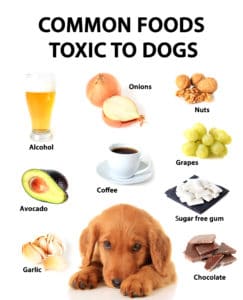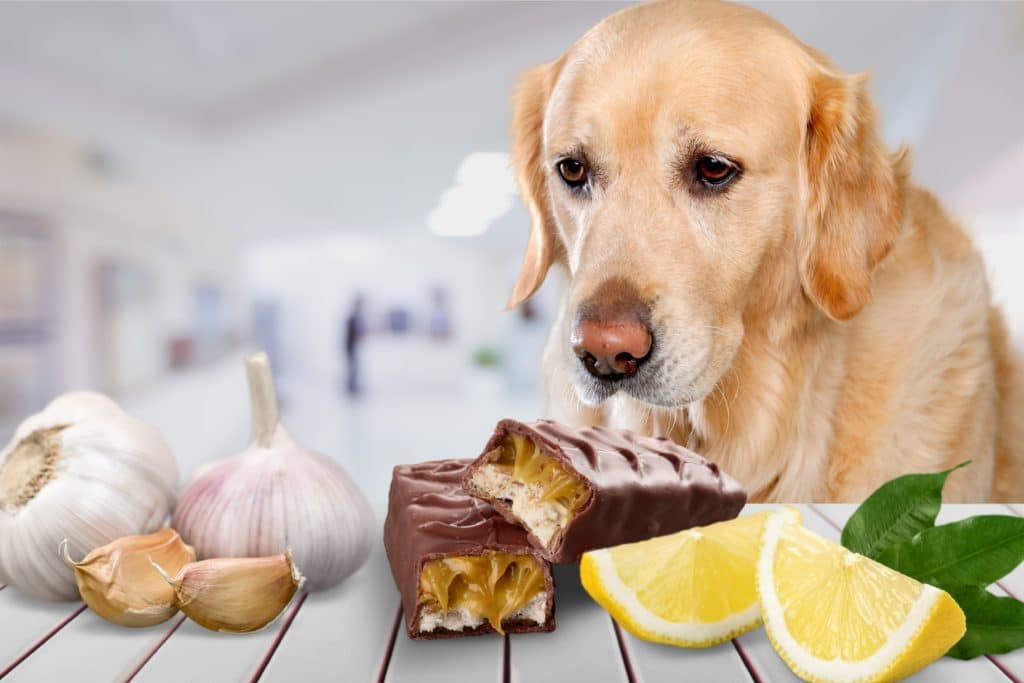We all love our pets. For many of us, one way we show that love is through special treats such as human food. As long as we don’t overindulge our loved ones into obesity, these little treats can be fun for both pet and parent. However, it is important to realize that dogs and cats are very different from humans in some very important ways, which can result in tragedies for the uninformed parent.
Toxic Foods for Pets
Xylitol
One of the newest and easily available human foods toxic to dogs, is xylitol. Xylitol is present in products from gums to sugar free cookies. When ingested in relatively small amounts, this sweetener can result in low blood sugar, seizures, liver failure and death. These symptoms can show up as quickly as 30 minutes or as long as 12 hours after ingestion, and treatment must be quick and aggressive or they can be fatal.

Grapes and raisins
Grapes and raisins have been found recently to induce kidney failure in some animals. This failure can be permanent and life threatening. It does not seem to relate to the volume ingested, and not all animals seem to be equally susceptible. Although some dogs have been eating grapes for years, the safe course is to avoid grapes and raisins completely.
Chocolate

Onions
Onions are tasty for our pets as well as us, but too many onions can be dangerous. High levels of onion ingestion in dogs and cats can cause life-threatening anemia.
After Exposure Act Quickly
With any toxic exposure, minutes count so knowing what to do can save a life. Most importantly, you should have the phone number of poison control, your regular veterinary and an after-hours hospital posted in your home. It is best to wait until you reach poison control before you do anything but usually you will be told to make your pet vomit to get rid of some of the toxic substance. Vomiting can be induced with a teaspoon of peroxide if you don’t have ipecac. Give the peroxide by mouth every few minutes, giving your pet a chance to relax between since many dogs and cats will refuse to vomit when held. Once vomiting occurs, or if you are unsuccessful within a few minutes, you should then seek professional help from a qualified veterinarian. Be sure to have an idea of how much of the substance your pet ingested and how long ago it happened.
ASPCA Animal Poison Control Center
National Hotline: 888-426-4435
Available 24 hours a day, 365 days a year.
Has your dog ever suffered from food poisoning? What happened? Tell us all about in the comments.











